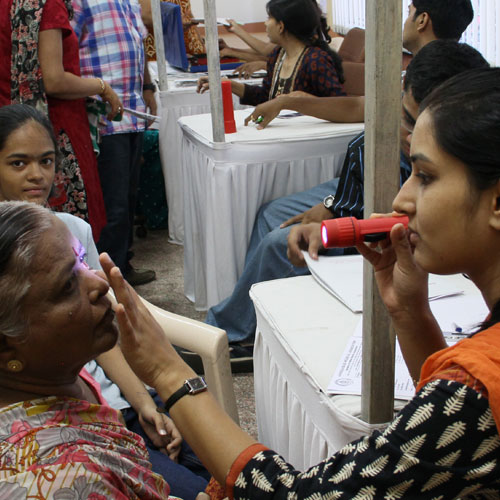
Researchers at South Africa’s Council for Scientific and Industrial Research (CSIR) have unveiled the world’s first digital laser
Lasers (photo therapy) might someday be the cure for brain diseases such as Alzheimer’s, Parkinson’s or Creutzfeldt-Jakob disease. Researchers at Chalmers University of Technology in Sweden, together with researchers at the Polish Wroclaw University of Technology, have made a discovery that may lead to the curing of diseases such as Alzheimer’s, Parkinson’s and Creutzfeldt-Jakob disease (the so called mad cow disease) through photo therapy. You can check out the abstract of the latest study, “Multiphoton absorption in amyloid protein fibers” published in the November 3, 2013 issue of Nature Photonics.
Lasers might be the cure for brain diseases such as Alzheimer’s and Parkinson’s. Zap your Alzheimer’s or Parkinson’s with a laser light instead of a drug or invasive surgery since a properly functioning protein is optically invisible to high power laser light, and toxic amyloid is responsible for brain diseases. A special laser zap on your Alzheimer’s or Parkinson’s could be the answer. These diseases might potentially be cured using lasers in photo therapies. Since the different amyloids have the same structure, perhaps they can be zapped by certain types of laser light using a process known as photo therapy.
After all, how many patients would prefer photo therapy to the side effects of drugs that may not work or other procedures that are more invasive?
Researchers at Chalmers University of Technology in Sweden, together with researchers at the Polish Wroclaw University of Technology, have made a discovery that may lead to the curing of diseases such as Alzheimer’s, Parkinson’s and Creutzfeldt-Jakob disease (the so called mad cow disease) through photo therapy. The researchers discovered, as they show in the journal Nature Photonics that it is possible to distinguish aggregations of the proteins, believed to cause the diseases, from the the well-functioning proteins in the body by using multi-photon laser technique.
“Nobody has talked about using only light to treat these diseases until now. This is a totally new approach and we believe that this might become a breakthrough in the research of diseases such as Alzheimer’s, Parkinson’s and Creutzfeldt-Jakob disease. We have found a totally new way of discovering these structures using just laser light”, says Piotr Hanczyc at Chalmers University of Technology, according to the November 3, 2013 news release, “Lasers might be the cure for brain diseases such as Alzheimer’s and Parkinson’s.”
If the protein aggregates are removed, the disease is in principle cured. The problem until now has been to detect and remove the aggregates
The researchers now harbor high hopes that photo acoustic therapy, which is already used for tomography, may be used to remove the malfunctioning proteins. Today amyloid protein aggregates are treated with chemicals, both for detection as well as removal. These chemicals are highly toxic and harmful for those treated.
With multi photon laser the chemical treatment would be unnecessary. Nor would surgery be necessary for removing of aggregates. Due to this discovery it might, thus, be possible to remove the harmful protein without touching the surrounding tissue.
These diseases arise when amyloid beta protein are aggregated in large doses so they start to inhibit proper cellular processes. Different proteins create different kinds of amyloids, but they generally have the same structure. This makes them different from the well-functioning proteins in the body, which can now be shown by multi photon laser technique. You may also wish to check out the site of the Foundation for Polish Science Welcome Grant, European Research Council or Chalmers University of Technology.
Here’s how the process works
Fibrillization of peptides leads to the formation of amyloid fibers, which, when in large aggregates, are responsible for diseases such as Alzheimer’s and Parkinson’s. In the latest study, researchers show that amyloids have strong nonlinear optical absorption, which is not present in native non-fibrillized protein. Z-scan and pump–probe experiments indicate that insulin and lysozyme β-amyloids, as well as α-synuclein fibres, exhibit either two-photon, three-photon or higher multiphoton absorption processes, depending on the wavelength of light.
The researchers proposed that the enhanced multiphoton absorption is due to a cooperative mechanism involving through-space dipolar coupling between excited states of aromatic amino acids densely packed in the fibrous structures. This finding will provide the opportunity to develop nonlinear optical techniques to detect and study amyloid structures and also suggests that new protein-based materials with sizable multiphoton absorption could be designed for specific applications in nanotechnology, photonics and optoelectronics.
It’s a possibility that someday shining a laser light on someone might be able to cure Parkinson’s and Alzheimer’s or Creutzfeldt-Jakob disease. The idea is that if the different amyloids have the same structure, perhaps they can all be zapped by certain types of laser light.
Source: http://exm.nr/1cBmAYK











 Researchers have found that people who have been using pain-relieving medications, like Opioid analgesics, for a longtime are at higher risk of developing depression.
Researchers have found that people who have been using pain-relieving medications, like Opioid analgesics, for a longtime are at higher risk of developing depression.





